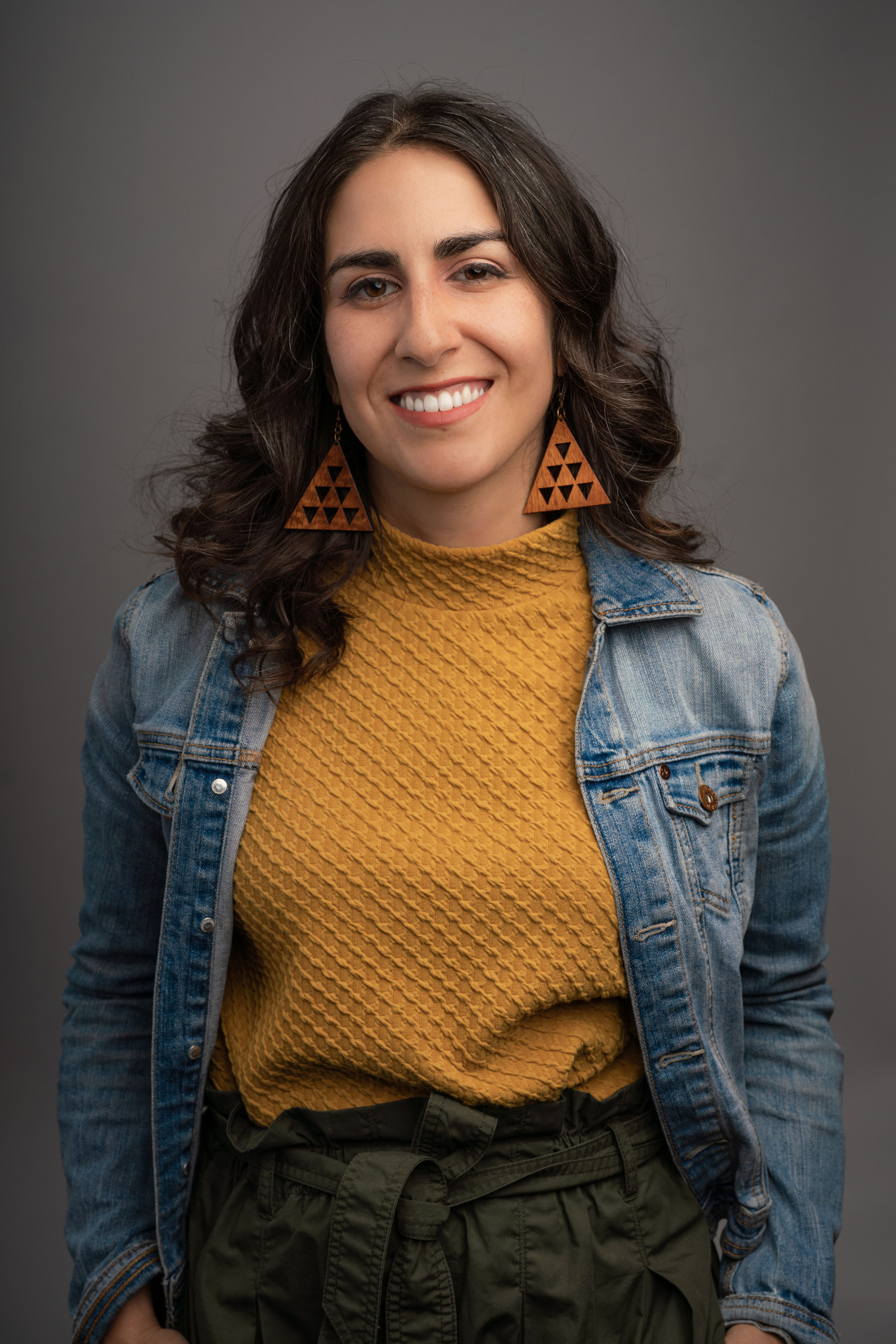Say you’re all set to start a new podcast — you’ve got the studio set up, a decent mic or two, and a great idea for a podcast that’s unlike anything else out there. Now’s a good time to consider, beyond just blabbing on about whatever it is you’re blabbing on about, podcast segments.
Having a few go-to segments can help break up all that content, provide a framework for structuring your podcast episodes, and give your listeners an idea of what they’re going to get episode after episode. And an engaging, repeatable segment or two can even keep listeners coming back for more.
What is a podcast segment?
A podcast segment refers to a specialized offshoot of or digression from the main content of your show, often introduced to help break an episode up into more consumable chunks.
Podcast segments give listeners a sense of structure and order when they listen to your series. Segments can supplement your main content, or you can use them as breaks to give the audience a taste of something completely different.
Special segments can keep listeners engaged, informed, or entertained (and of course, you’ll need to do at least one of those things if you want anyone to listen for more than five minutes). They can also help podcasters segue more smoothly into topics outside their usual purview.
15 inspired podcast segment ideas
Some creative ideas for a podcast segment include:
- Fact of the day
- Ask the audience/host
- Product recommendations
- News segments
- Guest interviews
- Tutorials
- Book reviews
- Life hacks
- This day in history
- Debate corner
- Guilty pleasures
- Podcast shout-out
- Expert advice
- Mindful moments
- Any speciality segment that suits your podcast
1. Fact of the day
Fun facts are just one of the many segment ideas for your podcast that can keep your audience hooked and engaged in your content. Introducing interesting facts between your other segments or at the midpoint of your podcast can refresh your listeners’ minds and help them learn something new.
2. Ask the audience/host
Some podcasts feature a segment where the hosts read questions, or answers to previously posed questions, from their audience.
You might share questions with their listeners through social media — like “What was your worst date?” or “What would you do with a million dollars?” Or, you may invite the audience to send in questions. The Can I Pet Your Dog? podcast features a segment called “My Mutt Minute,” where listeners submit a 1-minute voice recording about their dog.
On Anna Faris Is Unqualified, host and actor Anna Faris invites podcast listeners to call in with an interesting story or question about relationships, and she and her celebrity guests call them back to offer advice.

3. Product recommendations
If your audience trusts your opinion, you can offer your honest product reviews and recommendations, which can be especially helpful when trying to increase affiliate link clicks. This segment doesn’t have to match up with your sponsored ads, either.
Whether you have a beauty and wellness podcast or simply want your listeners to enjoy the same products you do, you could consider including a segment that introduces new brands or tools to their lives.
4. News segments
Some podcasts keep listeners on their toes by delivering news and updates in particular fields.
For instance, the NPR Politics Podcast recaps the latest political events of the week, whereas Consider This, an NPR offshoot that recaps a single news story in 15 minutes, includes an independent segment that delivers local community news depending on the city (Los Angeles, New York, Boston, etc.). Maybe you could do a quick recap of the latest headlines in whatever niche your podcast lives in.
5. Guest interviews
Sitting down with a special guest can help your audience hear it straight from the horse’s mouth — and an interview doesn’t have to take up an entire episode.
NPR’s FilmWeek is a weekly podcast dedicated to reviewing and discussing new movies, and often also includes a segment in which host Larry Mantle interviews filmmakers and directors. There are a million other interview podcasts — it’s pretty much the most common segment in podcasting, and for a good reason.

6. Tutorials
Tutorials are instructional segments that teach listeners how to do something or provide step-by-step guidance on a specific topic. You can run a tutorial segment to help listeners learn a new skill and establish your expertise in a specific area.
In the Creative Class podcast, writers Kaleigh Moore and Michael Keenan discuss all things related to the business of freelancing: trends, client getting, mental health, and more. Some segments, however, are more focused on how to achieve a specific task, like creating a client referral system.
7. Book reviews
Whatever themes you discuss in your podcast, there are probably hundreds of books you could recommend to listeners. A book review segment is a fun way to engage your audience on an intellectual level and spark conversation.
8. Life hacks
Want to help listeners win? Give them quick tips, shortcuts, or unconventional ways to solve problems and improve their lives. Hacks are normally time-saving advice that listeners can implement fast. Creating a segment for them can help you attract new listeners looking for solutions to their challenges.
9. This day in history
Discuss significant things that happened on that day in history and their impact on the present day. Adding historical moments into your podcast gives listeners valuable context. Plus, it helps them better understand current events or cultural phenomena.
10. Debate corner
Debate corner is a segment where two or more people with different opinions have a discussion on your show. You can use debate corners to explore different perspectives and promote open dialogue among your audience.
Whether it’s a debate over politics, pop culture, or just your favorite flavor of Pop Tart (hey, it could go viral), it’s a great way to spur conversation and get listeners invested.
11. Guilty pleasures
In a guilty pleasures segment, the host and guests talk about their interests and hobbies they find indulgent or embarrassing, but genuinely love. By including a segment like this, you can connect with listeners on a more personal level. It’s lighthearted and relatable, and can create more candid conversations listeners want to hear.
12. Podcast shout-out
What better way to network with fellow podcasters, share your favorite shows, and give your listeners something new to download than with a podcast shout-out segment? Spend some time every episode telling your audience about a podcast you love — maybe one that’s related but not identical to your own. Playing a voice clip where the host talks about the show is optional, but encouraged.
13. Expert advice
An expert advice segment involves inviting experts from a particular field to share knowledge and advice on relevant topics. Showcasing experts and influencers on your podcast helps listeners deepen their understanding of a subject, and learn practical takeaways they can apply to their own lives.
In Talking to Teens, parent-teen researcher and podcast host Andy Earle talks with experts on teen parenting regularly. He invites authors to discuss all types of parenting topics, from teen depression to brain chemistry and motivation.
Hosting regular expert advice segments provides listeners with credible information and positions your show as a valuable resource — a win-win for everyone.

14. Mindful moments
If your podcast is in the health and wellness or spirituality niche, a mindful moments segment is a great way to give your audience actionable content. In a mindful moment, you guide listeners through short mindfulness exercises, reflections, or meditations to promote relaxation and focus.
15. Any specialty segment that suits your podcast
Segments can be a chance to get creative and engage your audience in a specific way that’s unique to your own podcast.
On Armchair Expert, hosts Dax Shepard and Monica Padman do long-form interviews with celebrities and academics — and each episode ends with a “Fact Check” segment, in which Padman runs through facts covered in the main discussion to verify them or set the record straight.
The long-running How Did This Get Made?, which dissects one so-bad-it’s-good movie in every episode, includes a segment called “Second Opinions,” where co-host Paul Scheer reads five-star reviews posted by Amazon users of the movie in question.

Podcast segment FAQs
How do you segment a podcast?
The most common way to segment a podcast is by first separating it into three parts:
- Intro. The podcast intro is the first chunk of your episode. An introduction of the podcast topic, episode theme, or special guest. Here is where you also might add a word from the sponsor.
- Body. The body is the meat of your podcast episodes, where the central interview, story, discussion, or lesson takes place. You can break up this main middle segment into one or two smaller segments.
- Outro. The outro or conclusion is where you wrap up the main points of the episode and either include a teaser for the next episode, insert a call-to-action, or leave the listener with final food for thought. Some podcasts might include sponsored ads at the end of the episode as well as in the intro, or between each segment.
How many segments should a podcast have?
While there’s no set number of podcast segments each episode should have, we recommend a minimum of three: the introduction, the body or main content, and the outro.
The number of segments largely depends on the podcast content itself. For instance, a murder mystery podcast might insert a few ad segments at the natural story break points, but may not include a variety of other segments like listener questions or fun facts.
However, a dense, complex podcast about science and space exploration may sprinkle a variety of segments into an episode to break it up, e.g. asking interview questions to an expert to expound on a specific topic or sharing the latest news in the field.
How can you come up with great podcast episode ideas?
A great podcast idea should be something you think audiences need — whether it’s an analytical deep dive setting historical records straight, a dinosaur-based comedy musical adventure, or an interview podcast featuring contemporary heroes you’ve never heard of.
You can cover a group of general podcast topic ideas, or focus solely on one specific topic. Ideally the idea should be viable enough to last multiple episodes, whether they’re connected by a running plot or story or linked by an overarching theme. Check out our podcasting tips or podcast training courses for more ways to run a successful series.











































